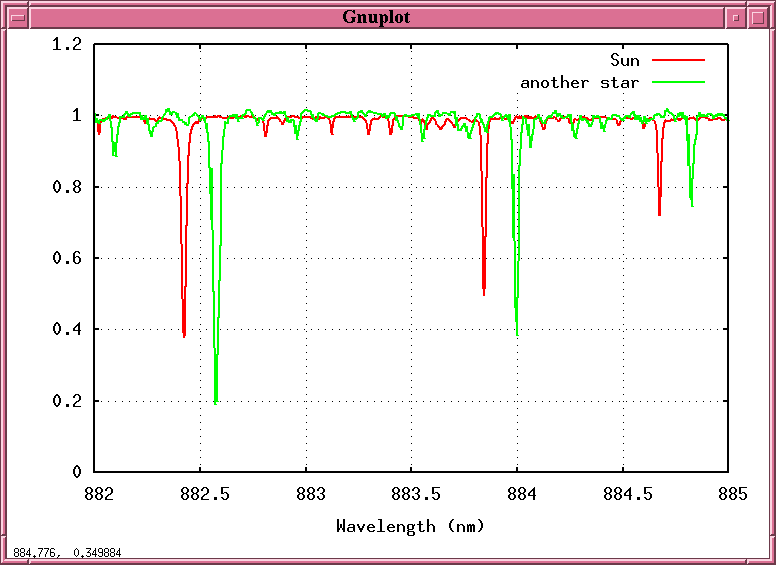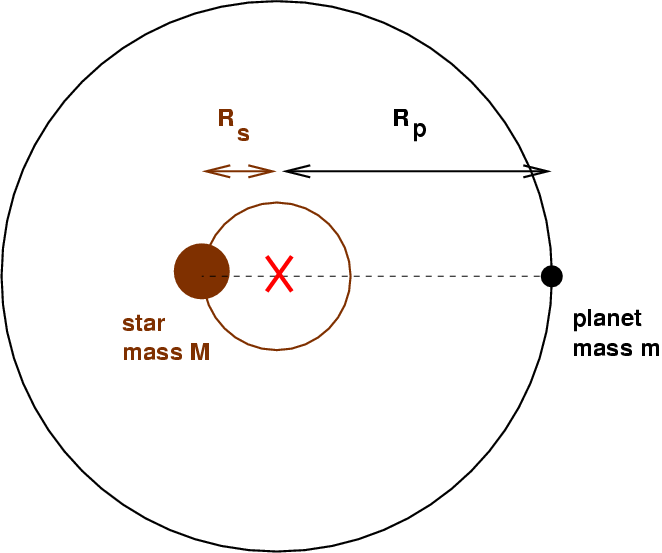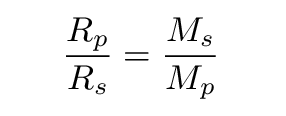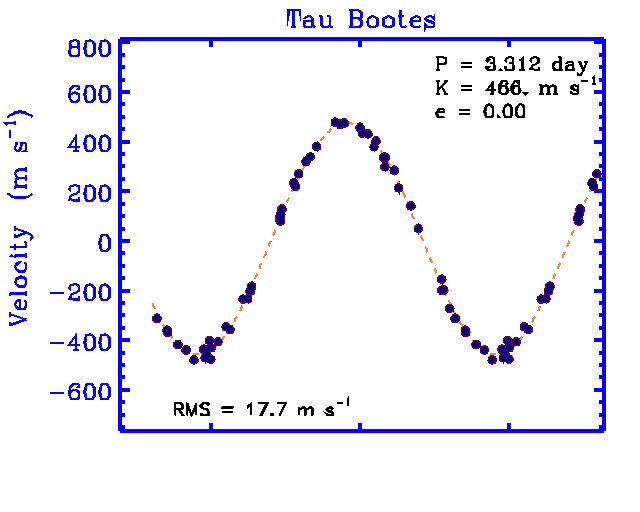
I've exaggerated the actual shifts by a factor of about 1,000 (!) for clarity.
 Copyright © Michael Richmond.
This work is licensed under a Creative Commons License.
Copyright © Michael Richmond.
This work is licensed under a Creative Commons License.
How can we find planets around other stars? Astronomers have tried five or six different methods....
The most successful method to date involves very careful measurements of a star's spectrum.
It turns out that if an object is moving towards you, or away from you, then the wavelength of light (or sound) emitted by that object will change slightly. We call this effect the Doppler shift .
When we look very, very, very closely at certain stars over a period of time, we see something wierd happen (click on the image below to see):

I've exaggerated the actual shifts by a factor
of about 1,000 (!) for clarity.
Q: Why are the wavelengths shifting back and forth?
The wavelengths shift because the star itself is moving towards us, then away, then towards, then away -- in other words, the star is moving in a little circle. It is moving around the center of mass between it and one of its planets.

If you could figure out the size of the star's orbit, Rs, and if you knew the size of the planet's orbit Rp -- which is always much, much, larger -- then you could figure out the ratio of orbital radii, and, thanks to center of mass, the ratio of masses.

Look at the measurements of a star called "tau Bootes". This star moves in a circle with a period of P = 3.312 days and a speed of about v = 466 m/s.

 Copyright © Michael Richmond.
This work is licensed under a Creative Commons License.
Copyright © Michael Richmond.
This work is licensed under a Creative Commons License.